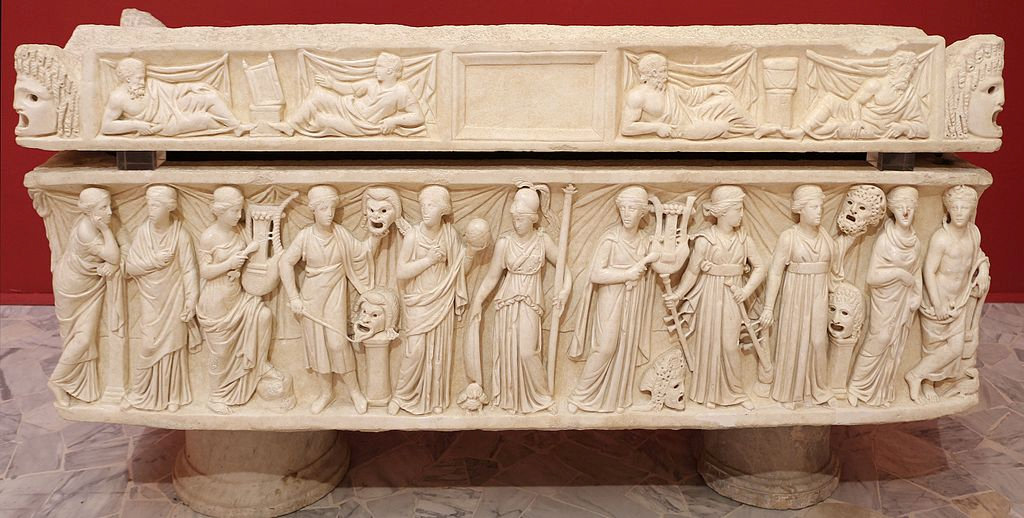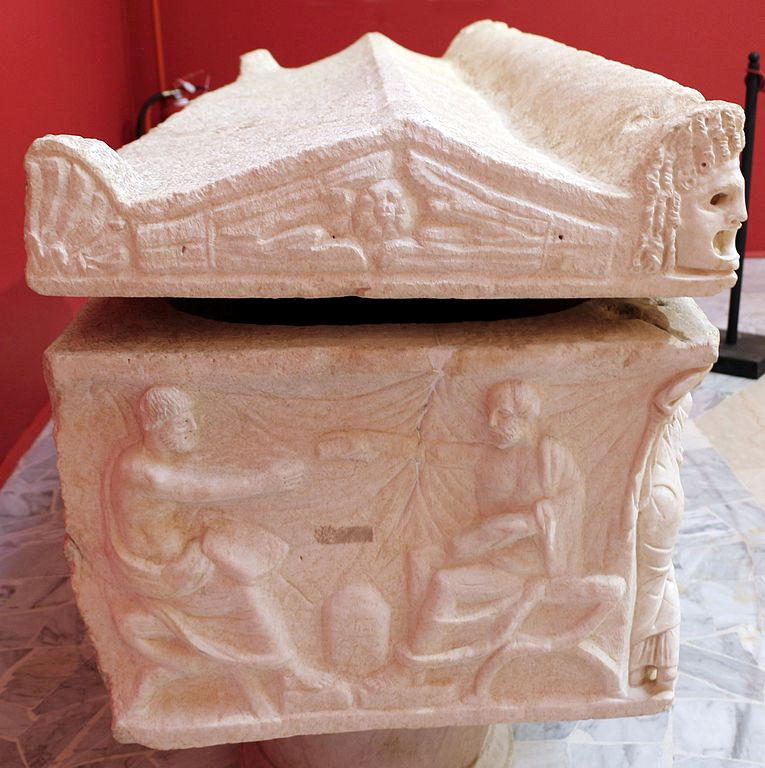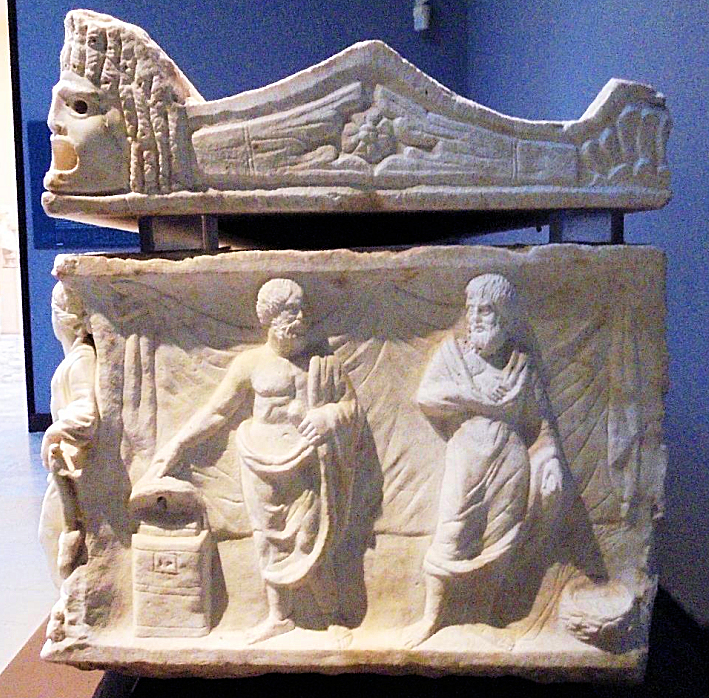Sarcophagus of the Muses (59954-59955)
Discovered in 2008 in the Isola Sacra necropolis.
Date: third quarter of the second century AD. W. 1.745 / 1.77 (lid), h. 0.44 / 0.19 (lid), d. 0.61 / 0.61 (lid).
The sarcophagus is made of marble from the Greek island Thasos. On the front the nine Muses are depicted, flanking Athena. From left to right: Polyhymnia (sacred hymns), Calliope (epic poetry), Terpsichore (dance), Thalia (comedy), Urania (astronomy), Erato (love poetry), Euterpe (lyric poetry), Melpomene (tragedy), and Clio (history). Between Urania and Erato stands Athena, goddess of wisdom, presiding over the arts and literature. At the far right is Apollo, the leader of the Muses.
The painted inscription on the lid has disappeared. To the left and right are lying figures of philosophers or poets. On the corners are theatrical masks. Pairs of philosophers are also depicted on the sides.
Inside the sarcophagus the body of a child was found, five to six years old. The sex could not be determined, but the absence of earrings, common in graves for girls, suggests that it is a boy. Research of the bones and especially teeth showed that the health of the boy had always been precarious, even before birth - apparently the state of health of his mother during the pregnancy was also not good.
There had been bandages around the legs of the child. In the mouth a bronze coin for Charon was found, dated to the late first or early second century (inv. nr. 59957). Below the pelvis was an apotropaic, curved iron nail (inv. nr. 59958). Below the head were two golden rings, dated to the Antonine period. The first is a seal ring with a plaque in the form of a foot wearing a sandal. It carries the Greek inscription MVCTIK, which stands for mystikos, "initiated into the mysteries" (inv. nr. 59959). The foot suggests the cult of Isis. The second ring has a double setting with emeralds (inv. nr. 59960).




Germoni 2009. Sindoni nr. 17. Guida 2024, 102-103. Photos: Wikimedia, Sailko; Sindoni.